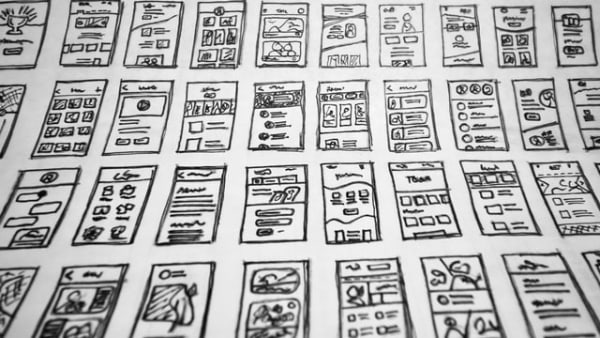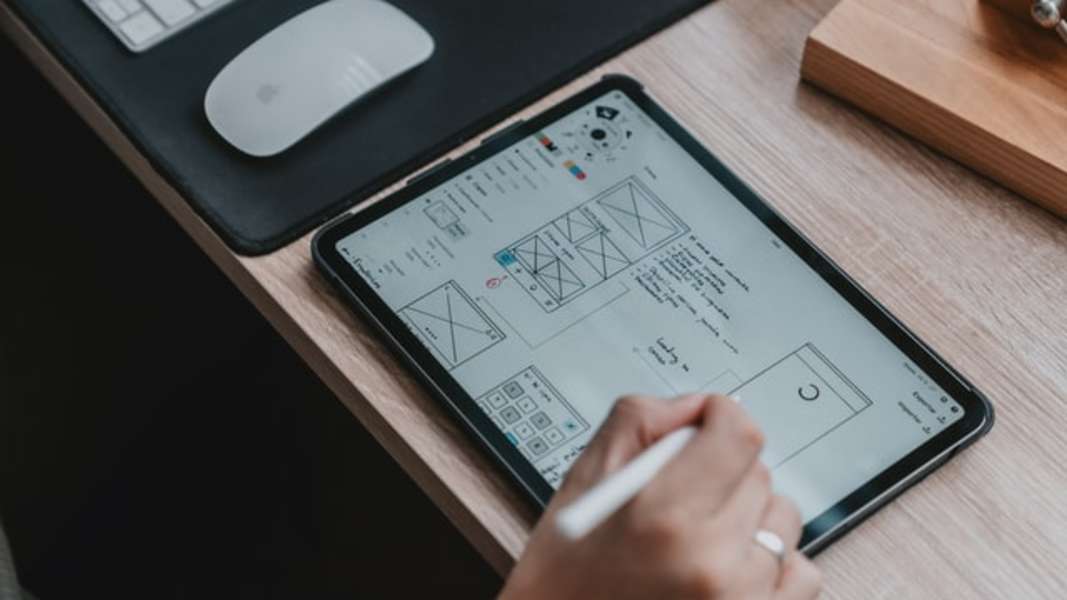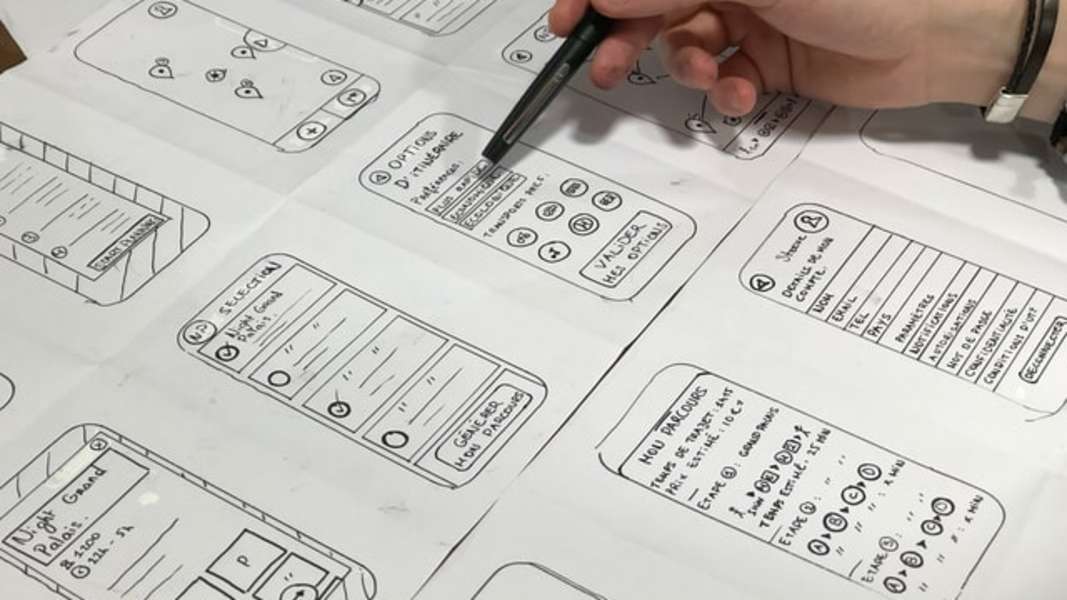
How To Hire A UX Designer
May 12, 2022

A UX (User Experience) designer creates accessible, impactful, and appealing digital products, such as websites and applications, that serve the end user's needs. They're skilled in applied creativity - by being able to conduct research, analyse its results and design creative solutions to the opportunities that have been highlighted. UX designers will also have a good understanding of programming software, content strategy, web design and web development to enable a holistic approach to their work.
Operating in a digital environment makes a UX designer an integral role for businesses wanting to achieve or maintain a positive user experience. They will provide users with a journey that's easy and accessible, which will, in turn, boost the company's reputation and turnover.
This article will help you understand the skills needed in a UX designer, and the specific tests you can set to ensure you hire the perfect person for the role.
What should a UX designer be able to do?
A UX designer is primarily responsible for researching, designing and testing a website or application - putting the user's needs at the front of the design process. This requires a certain level of programming ability, a strong eye for design and a methodical, analytical approach to work.
With the task of designing and developing a client or business's digital platform, a UX designer has a busy job which requires them to draw on a number of soft skills as well as their technical ability. Using teamwork, communication and time management to deliver a project and keep stakeholders in the loop.
UX designers should be able to:
- Conduct user research to determine design requirements
- Develop new visual design concepts and modify concepts based on stakeholder & user feedback
- Design, build or maintain digital platforms, using computer languages, content creation tools, and digital media
- Co-create and document style guidelines for website content
- Consider technical requirements such as budgets, equipment, resource and accessibility laws to website designs.
- Provide detailed specifications of websites and applications, including features, activities, software, communication protocols and programming languages.
- Create prototypes, site maps, application models, image templates, and page templates that include physical, interface, logical, or data models.
- Maintain knowledge of current technologies and programming practices through continuous learning activities.
Skills to look for in a UX designer
UX designers are tasked with designing, developing and improving websites and web applications. To do this, they will need to have a unique skill set including an ability to conduct and analyse research, develop stylish yet functional designs, demonstrate the effectiveness of these through site mapping and testing as well as the ability to use programming software.
UX designers should be able to demonstrate the following:
- Confidence in planning, conducting and rationalising research: so that designs can be modelled off of real data and feedback, making the website or application more likely to be successful.
- A balance between innovative and commercial design: being able to identify new creative approaches to design is important, but they must be married with commercial awareness to entice the target audience.
- Proven ability to use design and programming software: the software may vary between organisations, but this will give your UX designer the ability to turn their ideas into reality - through design mock-ups, content creation and website coding.
- Understanding of relevant legal requirements: there are laws surrounding how websites and applications are designed. From accessibility to privacy policies, UX designers need to have an understanding of these to ensure their designs are compliant.
- Strong communication skills: this is a role that involves working with multiple internal and external stakeholders and working cross-department in the workplace. Being able to communicate effectively will improve delivery and foster good working relationships.
Useful abilities for a UX designer
As well as strong design and development skills, UX designers require an array of abilities to meet the practical needs of the job, with relationship building, project management and planning tasks often also required.
Some of these skills, behaviours and abilities include:
- Time management: most projects will have a delivery deadline, so it is crucial for UX designers to be able to track and manage the time they have effectively.
- Creative problem-solving: UX designers need to be able to think outside of the box. It's their job to find solutions for problems not yet fixed, therefore being able to see beyond what already exists will serve them well.
- Collaborative nature: UX designers have to work simultaneously alongside stakeholders, UI designers, web developers, content teams and brand managers to bring projects to life, so being collaborative by nature will make this process far smoother.
- Agile mindset: in the digital space, updates, breaks and moving goalposts are commonplace - so having an open, agile mindset will aid UX designers in going with the motions - and not becoming overwhelmed by hurdles.
Which soft skills tests could I use to hire a UX designer?
Alongside the specific qualifications and skills needed to design a successful website or application, it's important to measure soft skills to ensure your UX designer demonstrates the attributes and behaviours desired:
- Time management: this is an integral soft skill for your next UX designer. Managing multiple workstreams, teams, priorities and delivery deadlines. Assessing your UX designers' time management skills before hiring is a good way to assure yourself they are capable of this.
- Adaptability: your UX designer will at times have to be able to work under pressure, adapt and respond to a changing landscape - be it in user requirements, design guidelines or technological blockers. Assessing how adaptable your applicant is will let you know they have the resilience to undertake this type of work.
- Communication: presenting ideas, conducting research, project management and working across departments means that a UX designer needs to be confident in their verbal and written communication, able to adapt their language, and possibly remove technical jargon when communicating with those outside of the discipline.
Which technical or aptitude tests could I use to hire a UX designer?
Depending on the nature of the programmes and software you want your content writer to work with, there are multiple different technical and aptitude tests you could set as part of the hiring process.
Here are some of the most commonly used tests that we'd recommend:
- Numerical reasoning: A numerical reasoning test is used to assess a candidate's ability to think critically and draw accurate conclusions. This would help to highlight an applicant's ability to interpret and leverage data in their day-to-day tasks.
- Verbal reasoning: Verbal reasoning tests measure a candidate's ability to understand written content and use it to make further deductions. This would help to highlight an applicant with a strong ability to clearly comprehend and think logically when communicating with others.
- HubSpot: A HubSpot test assesses a candidate's level of proficiency using the HubSpot CMS (Content Management System) platform. UX designers use this to plan, manage and implement content changes in line with their designs.
Our recommended test battery for a UX designer
Hiring the best UX designer for your business is important, and to employing a strategic range of aptitude, soft skills and software tests to use in the recruitment process, will ensure you only interview and hire the perfect person or people for the job.
The tests you should consider are:
- Adaptability: to ensure continuous progression for both employee and product, even whilst under pressure.
- Numerical reasoning:to benefit from the analytical skills that come with exceptional numeracy.
- Time management:to ensure stakeholder expectations can be managed and project deadlines are met.
- Programming tests: to meet criteria for relevant coding skills for the job, such as HTML or CSS.
For more information, head over to our pages on UX designer tests.
Boost your hiring power.
Start using Neuroworx today.
Talk is cheap. We offer a 14-day free trial so you can see our platform for yourselves.
Try for free




